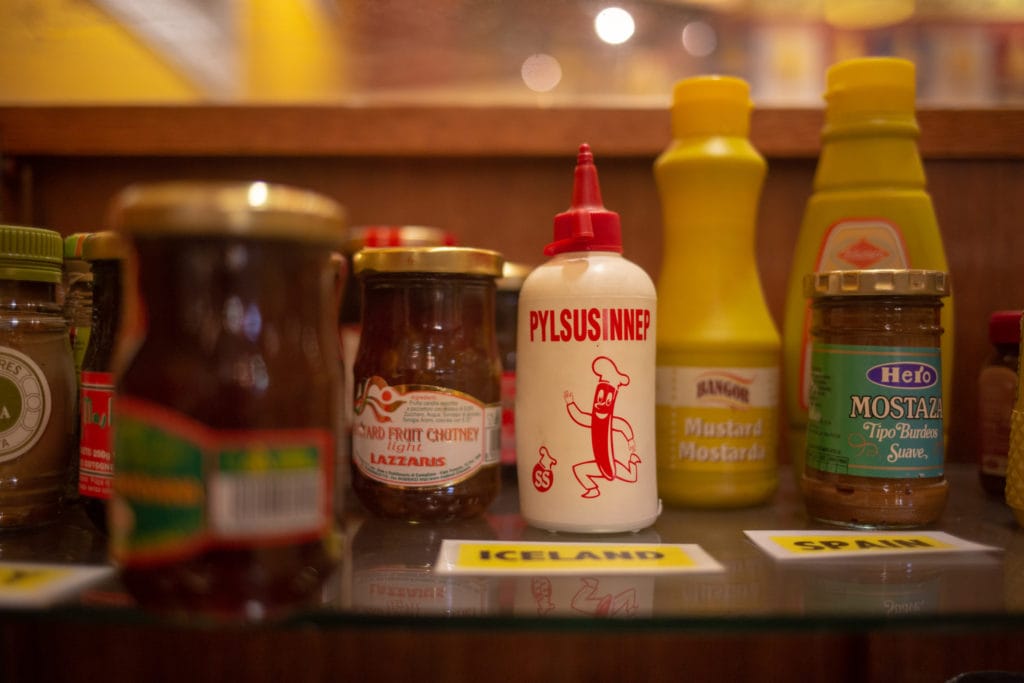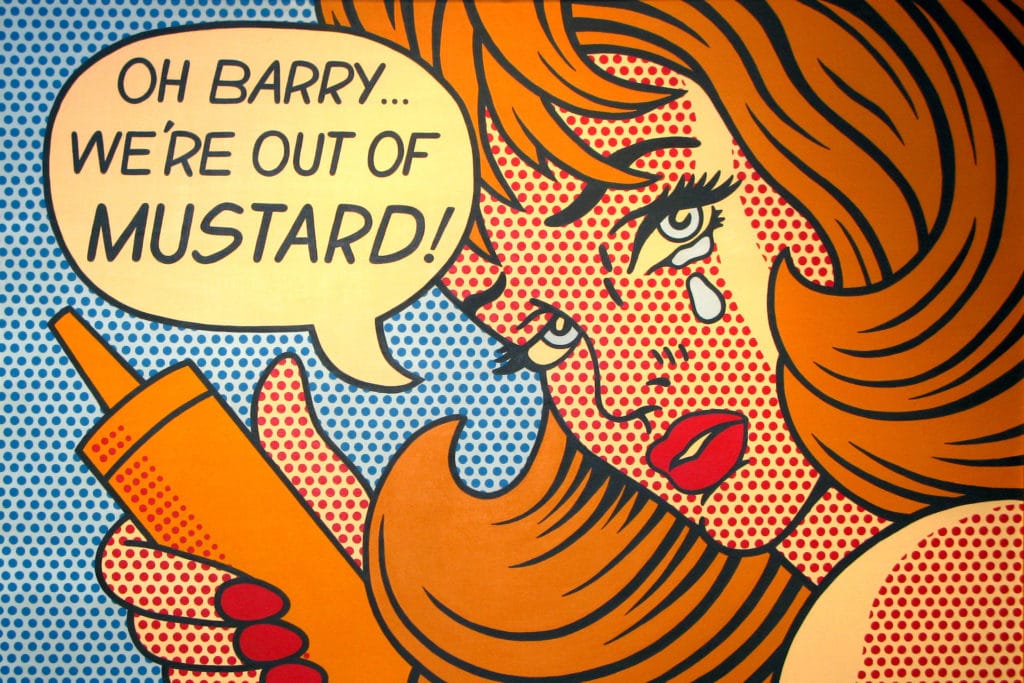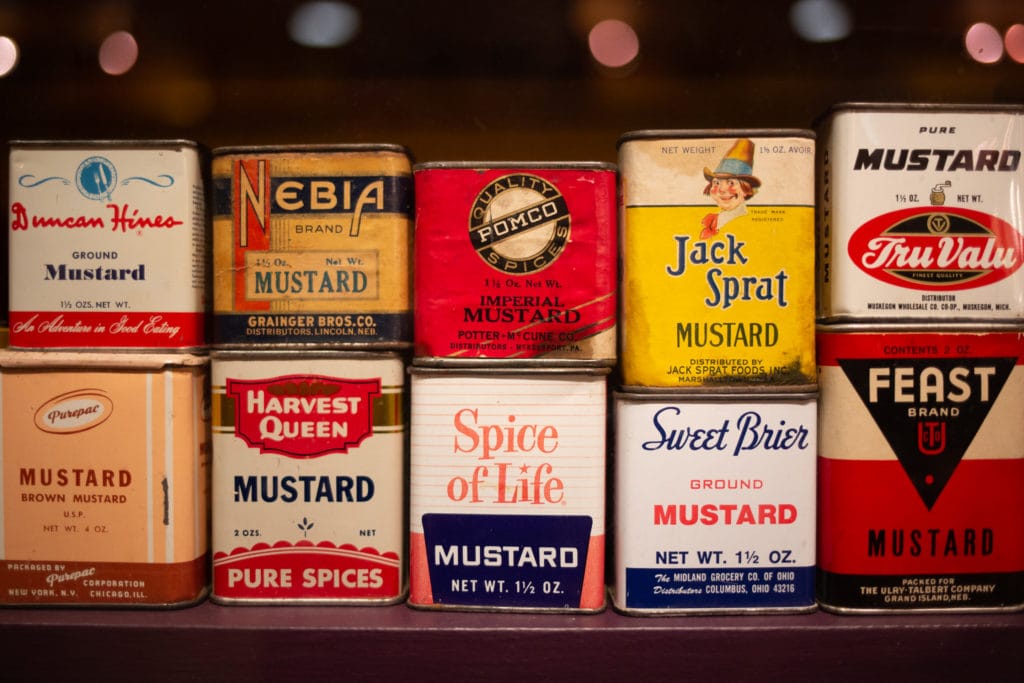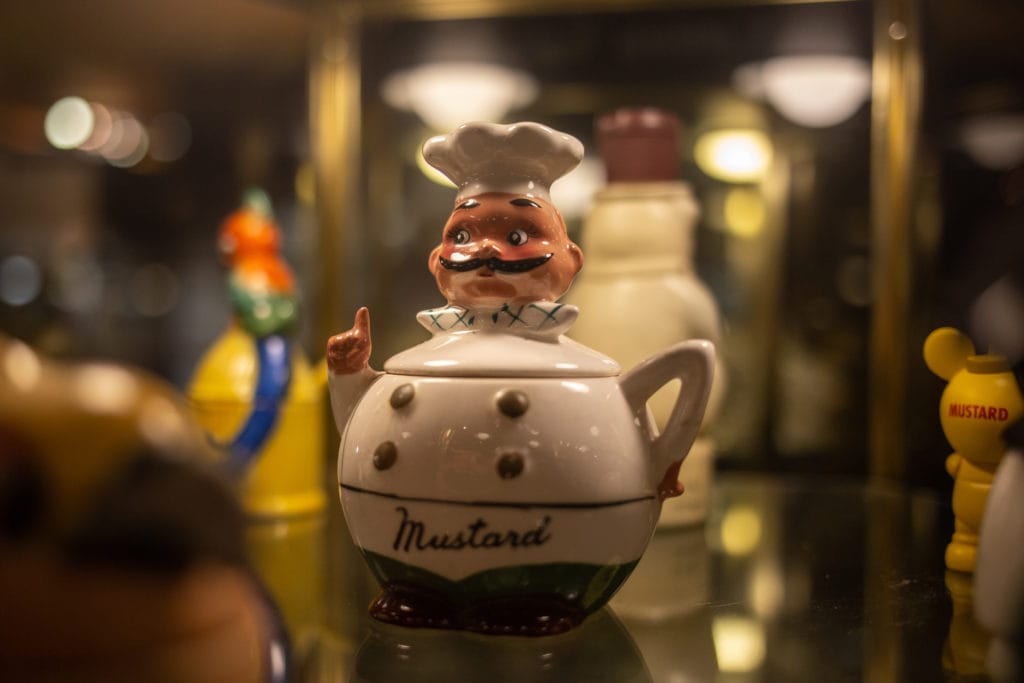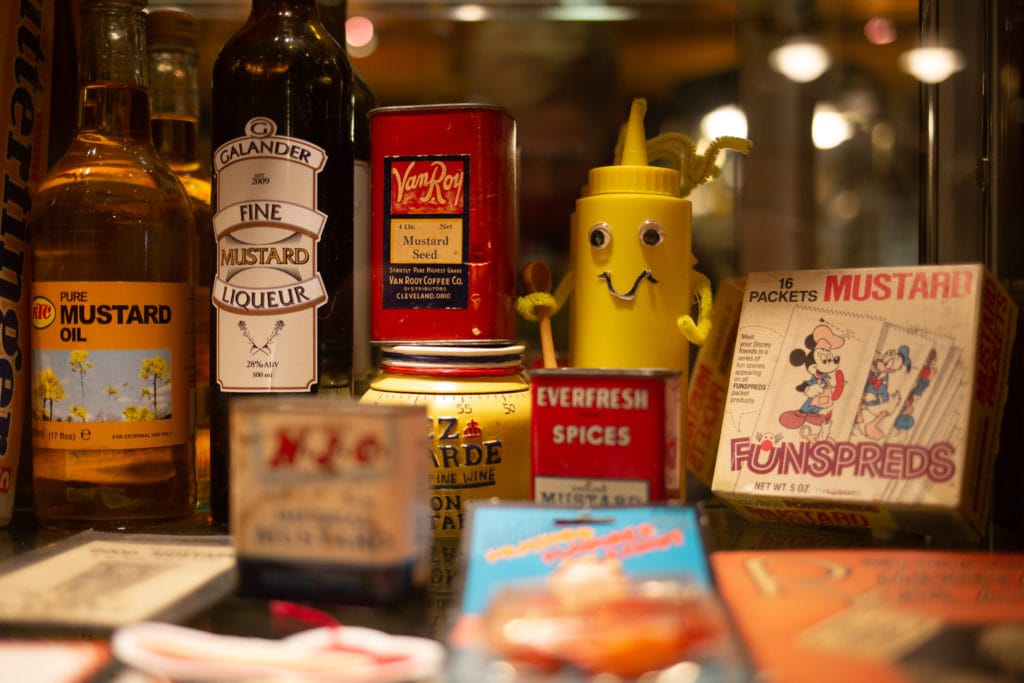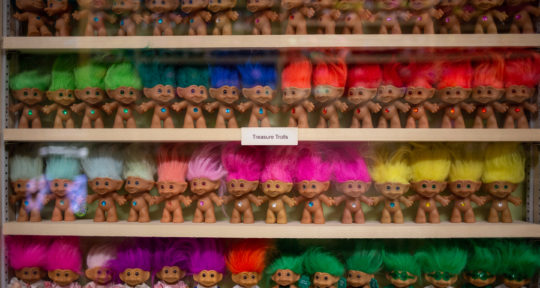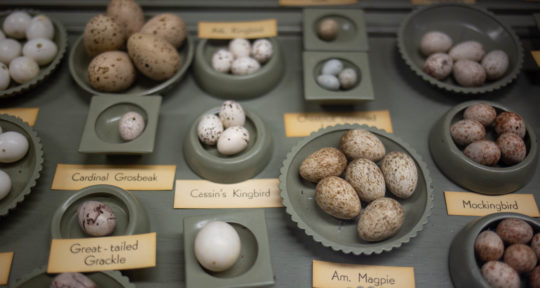In the late 1980s, Barry Levenson, Assistant Attorney General for the State of Wisconsin, was arguing a case before the U.S. Supreme Court. Levenson had a secret good luck charm stowed away in his left pocket—a tiny jar of Dickinson’s stone ground mustard. He won the case, but instead of ramping up his law career, he left the profession altogether just a few years later to pursue his passion for mustard. In 1992, Levenson opened The Mustard Museum in Mount Horeb, Wisconsin.
When Levenson’s collection of mustards and memorabilia outgrew its home in Mount Horeb, he moved the museum to its current location in Middletown, Wisconsin. The National Mustard Museum now has more than 6,000 pots, tins, and jars of mustard from all 50 states and at least 90 different countries.
“It’s really taken on a life of its own,” says Levenson.
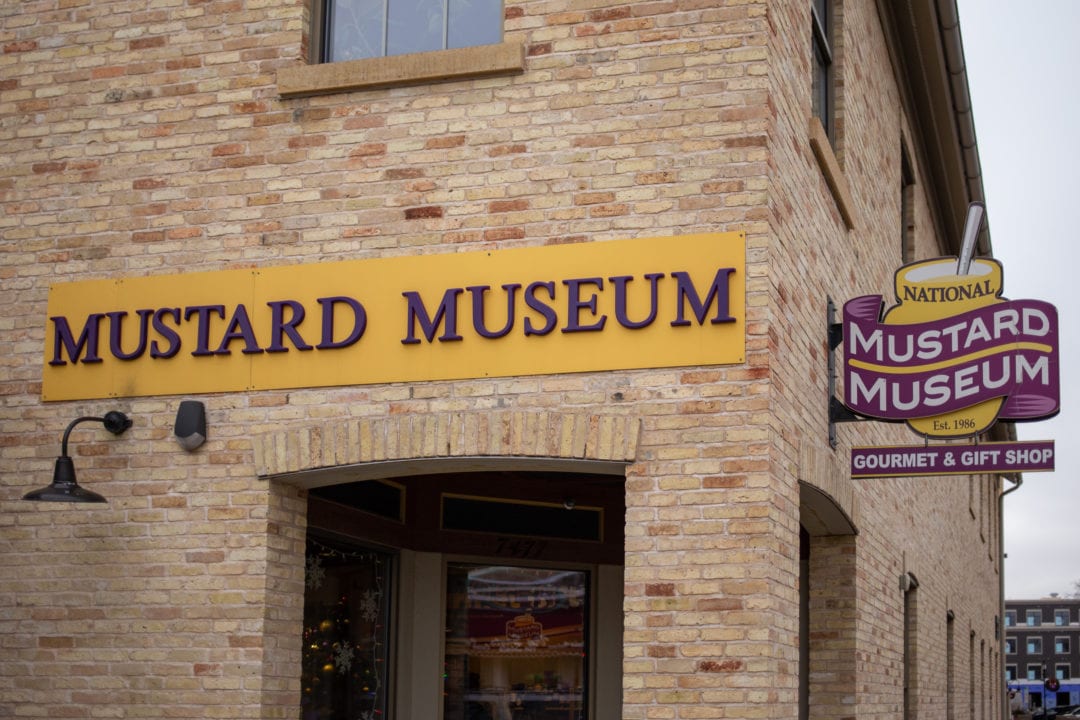
The museum, which he describes as “the complete history of a condiment under one roof,” includes The Great Wall of Mustard, advertisements, antique containers, a mustard vending machine, an interactive trivia game, and a rotating selection of Mustardpiece Theatre shows (The Sound of Mustard; Hello, Dollop!; Annie Get Your Bun; and The Full Mustard).
Admission is free; guests are encouraged to visit with a Confidential Condiment Counselor at the tasting bar, and taste more than 800 mustards available in the gift shop “‘til you drop.”
From French’s to truffles
Before he stood before the highest court in the land, fortified by the tiny jar hidden in his pocket, Levenson was just another distraught sports fan. The morning after his beloved Boston Red Sox lost the 1986 World Series to the New York Mets, Levenson found himself wandering aimlessly through a grocery store late at night.
“I thought to myself, what am I going to do?” Levenson says. “I’ll start collecting something.”
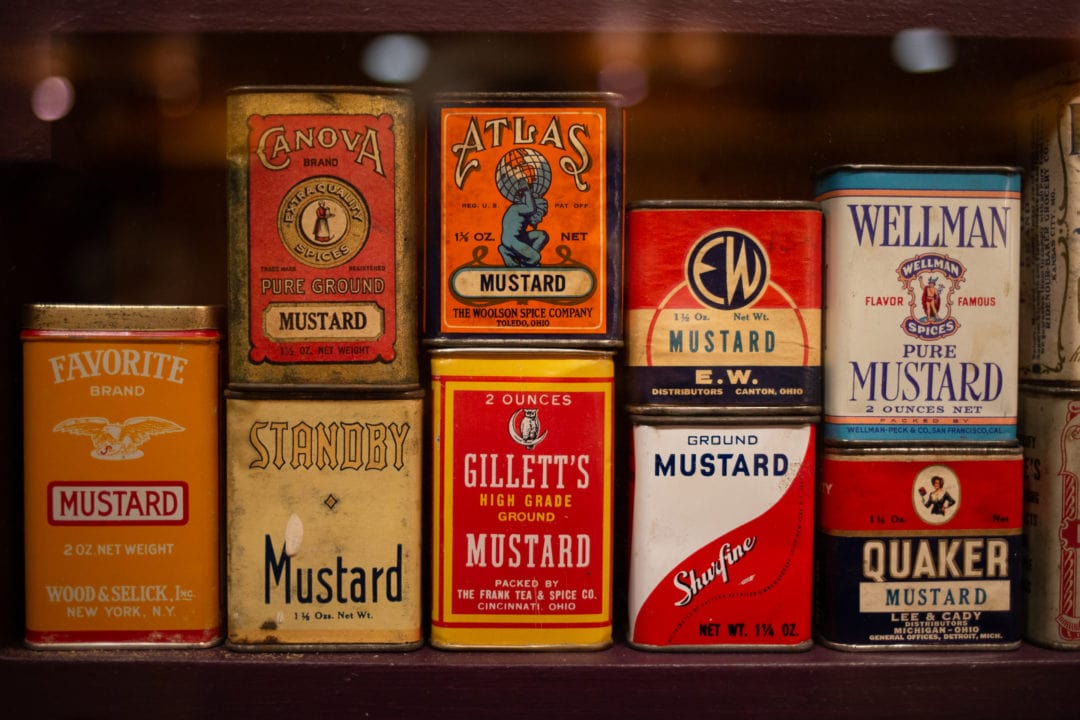
When he reached the mustard aisle, Levenson heard a voice telling him, If you collect us, they will come. He left the store with a dozen jars of mustard and a collection was born. In the beginning, Levenson purchased most of his mustards, but now people send him new additions from all over the world.
Although he’s not an official record-holder, Levenson is confident that no one can beat his mustard count. “Nobody else has more than 6,000 mustards, I’m sure of it,” he says, and new pieces are being added to the collection all the time.
A jar of Barcatti Mostaza traveled to the museum from South America on a motorcycle; the family of James Arthur Gibbons—who Levenson calls “the second-most passionate collector of mustard pots” after himself—donated his collection of antique mustard pots to the museum; and the most recent acquisition came from Transylvannia.
The museum features mustards from 90 countries. | Photo: Alexandra Charitan Roy Lichtenstein-inspired art at the museum. | Photo courtesy of Barry Levenson Photo: Alexandra Charitan Photo: Alexandra Charitan Photo: Alexandra Charitan
Levenson didn’t grow up in Wisconsin, but came to America’s Dairyland for school and never left. Because of the area’s German heritage—which includes a lot of bratwursts and sausages—he says that mustard was already a popular condiment in the Midwest. “I think it’s actually illegal to put ketchup on sausages,” Levenson says, laughing.
Picking a favorite mustard would be like choosing a favorite child, Levenson says, but it also depends on what he’s eating at the moment. “Mustard is quite varied in styles and flavors,” he says. Beyond the classic yellow and spicy varieties, there’s a mustard that will pair well with almost any food you can think of—including Dijon mustard with salmon, mustard vinaigrette on a salad, and even fruity mustards on donuts.

“I always liked mustard,” says Levenson. “But I wasn’t obsessed with it like I am now. The mustards just spoke to me.”
Despite his title of Chief Mustard Officer, Levenson remains refreshingly down-to-earth about what qualifies as a good mustard. “French’s is a great mustard,” he says. “There’s absolutely nothing wrong with it.”
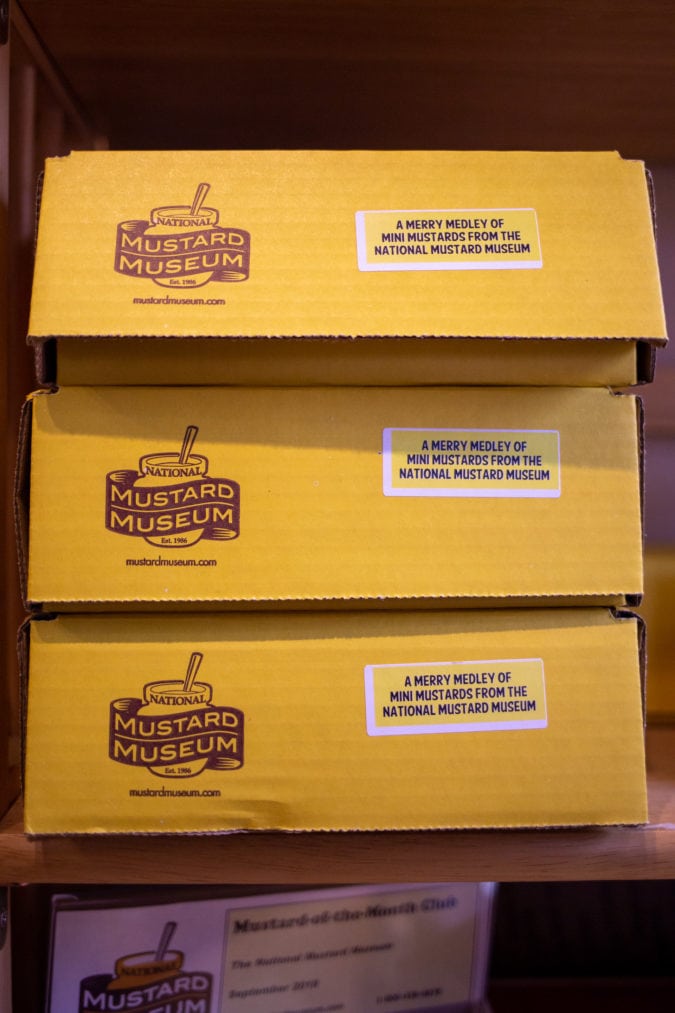
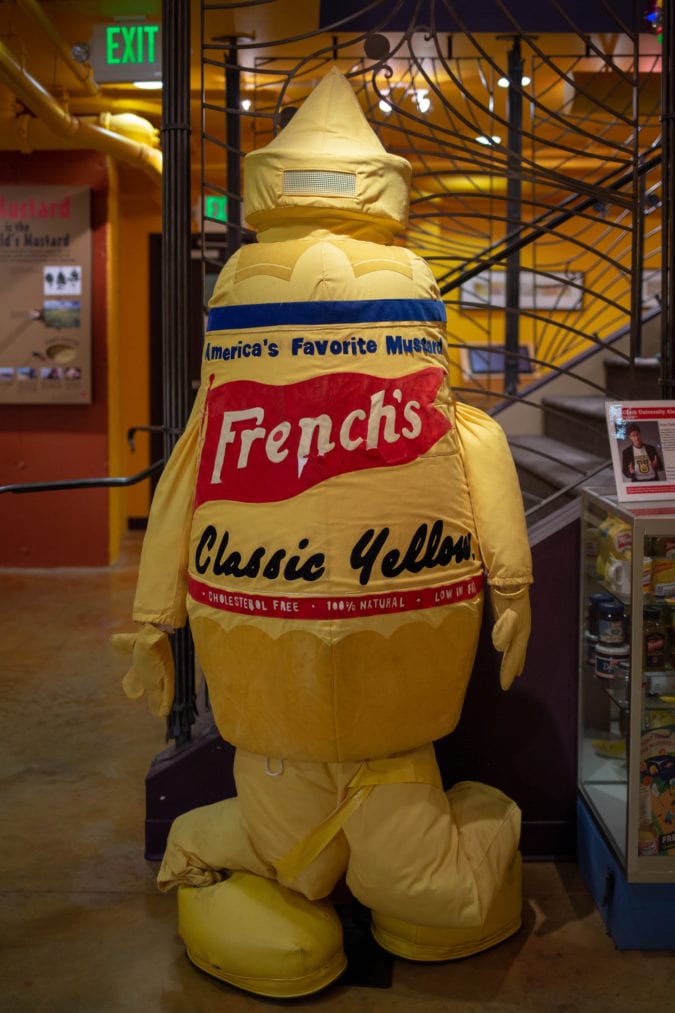
The gift shop and tasting bar includes everything from those ubiquitous squeeze bottles of French’s to pricey jars made with black truffles. “People spend a lot of money on a nice bottle of wine and it’s gone in a night,” Levenson says. “A really fine mustard will last you a long time.”
Poupon U
The National Mustard Museum, located 45 minutes from Wisconsin Dells, has been featured on The Oprah Winfrey Show, The Food Network, and HGTV. “People think the museum is odd and quirky, which it is,” Levenson says. “But we have a serious side too. Mustard is a condiment that goes back centuries.”
The museum hosts the preliminary and final rounds of judging for the annual World-Wide Mustard Competition, with Levenson serving as the coordinating judge for the industry’s biggest competition. “It’s quite a task to judge 300 entries,” he says.
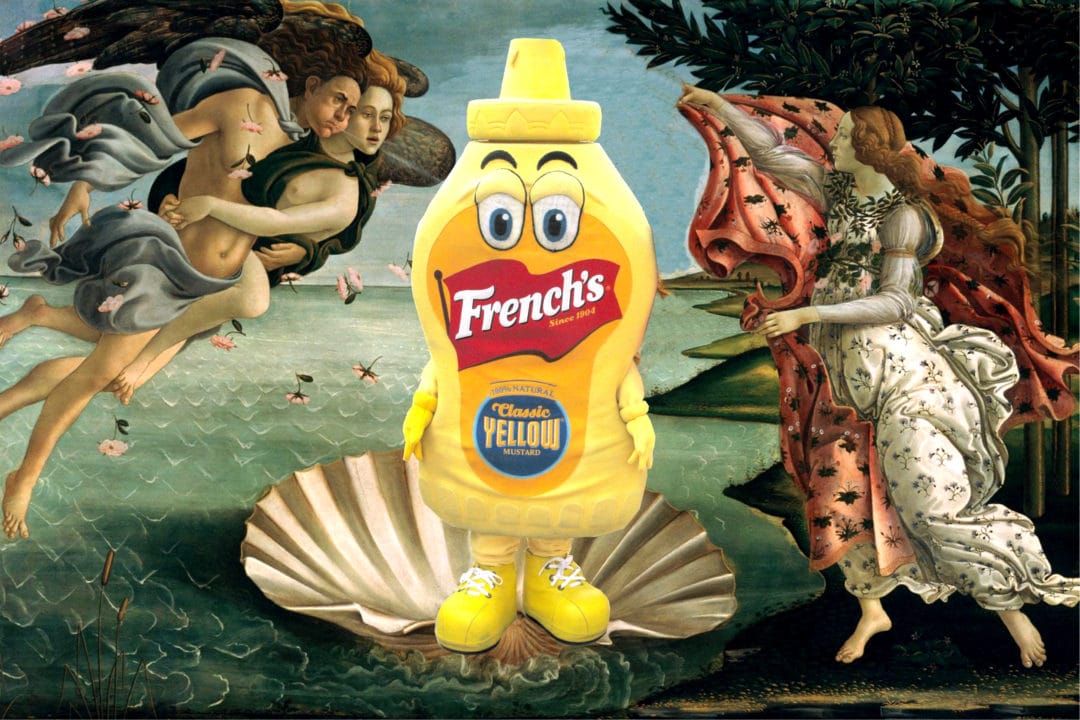
Since 1991, the museum has also hosted National Mustard Day festivities. On August 3, the museum will “paint the town yellow,” raising money for local charities with live music, hot dogs, and mustard games. The hot dogs may be free, but they come with one caveat: “No ketchup allowed,” warns Levenson.
Speaking of that other popular condiment, while the Senator John Heinz History Center in Pittsburgh does have ketchup-related exhibits, a full-blown ketchup museum does not yet exist. When I mention the idea to Levenson, he is incredulous. “A ketchup museum?” he says. “What does that look like—it could fit in a phone booth.”
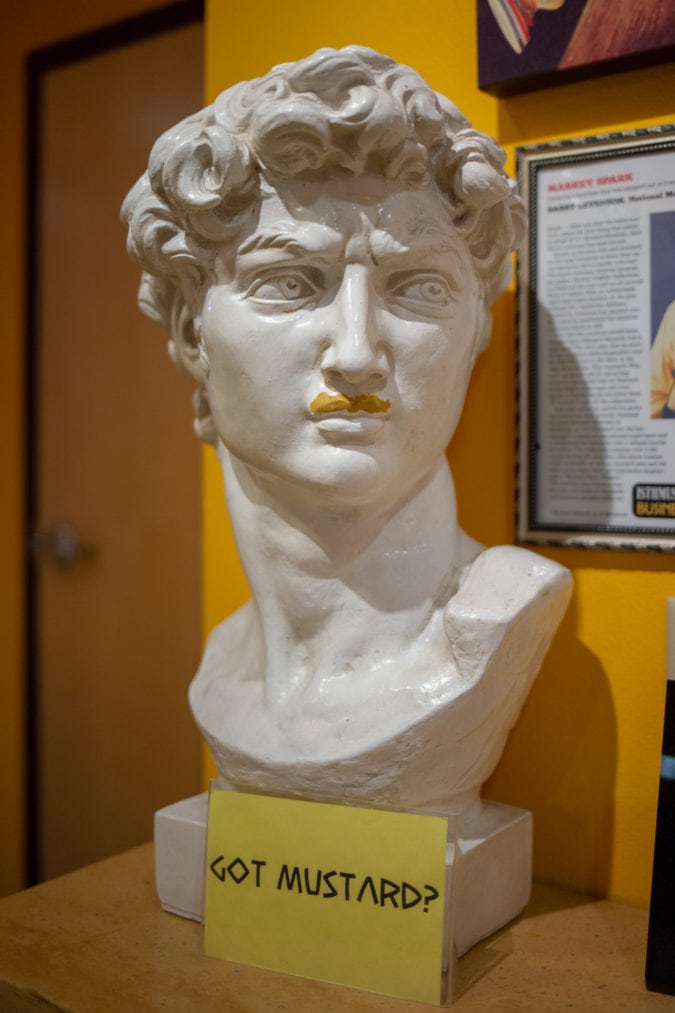
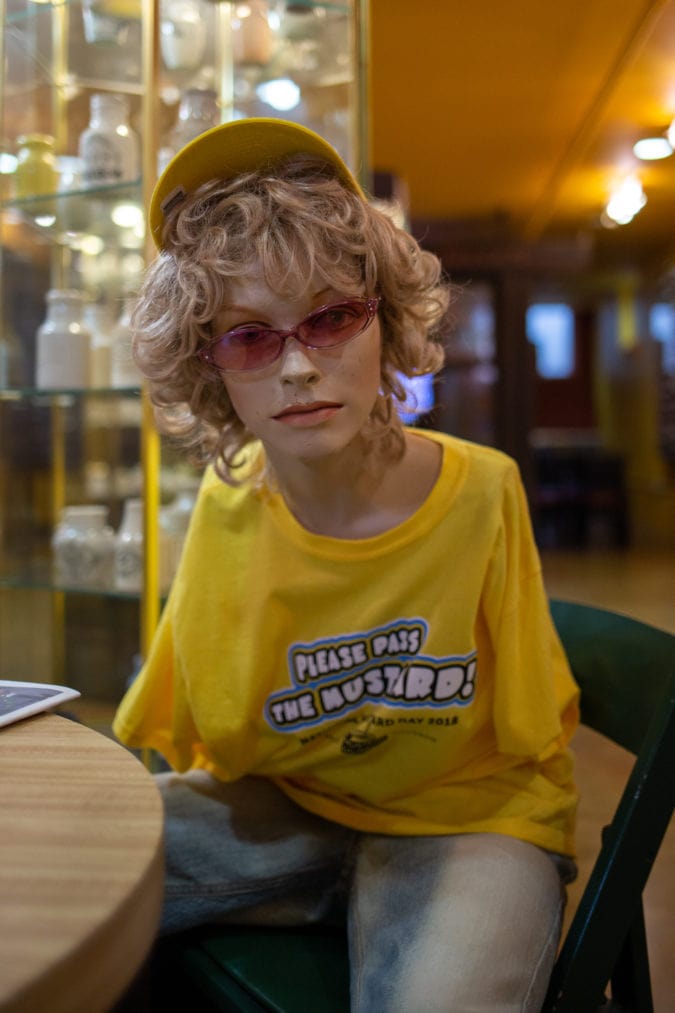
Anyone looking to take their love of mustard to the next level can become a graduate of the museum’s Poupon U for just $8. The university’s motto is “lowering the bar in higher education,” and while they don’t have a football team, Poupon U does have a pep rally chant, two fight songs, and a drama club.
On our hot dogs, on our bratwurst,
Mustard is so cool.
Never mayo, never ketchup
They’re against the rules.
Gleaming gold and mellow yellow,
Smooth, rough, sweet and hot,
Fight, POUPON U, we’ll fight
and eat some lunch.
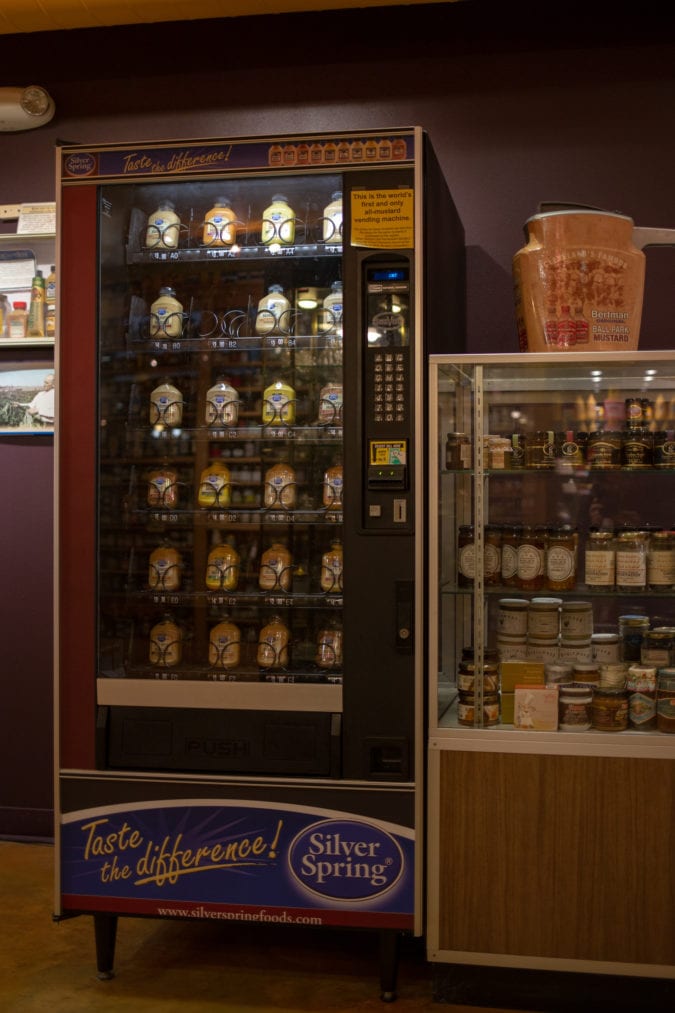
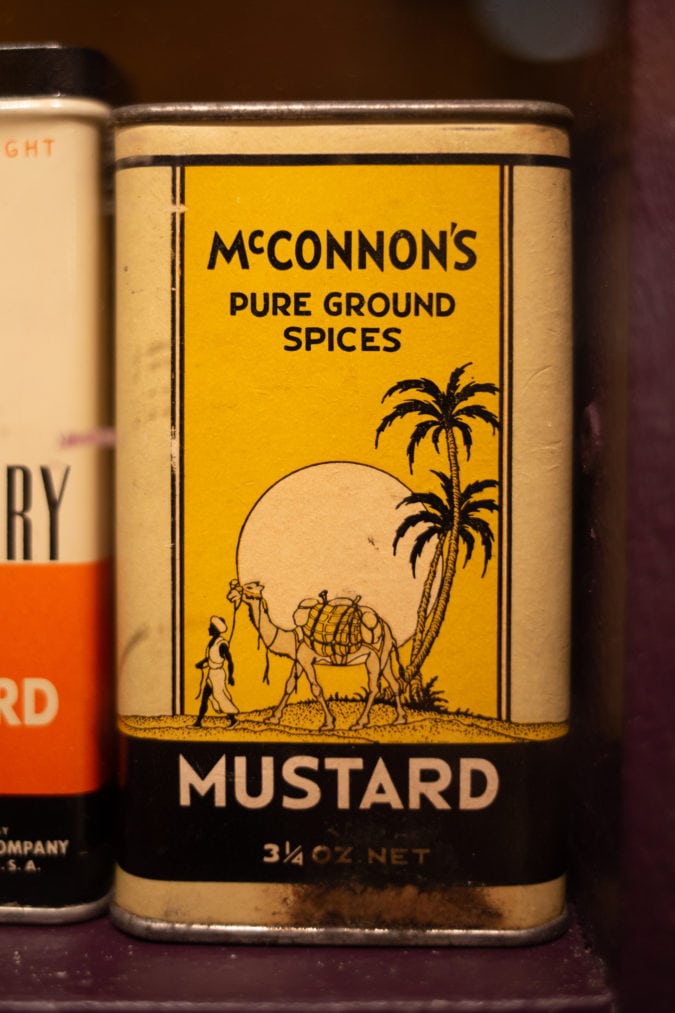
Diplomas, sweatshirts, mugs, hats, and megaphones are all available in the gift shop. For the mustard-lover who has everything, Levenson was able to secure a pair of POUPON U vanity Wisconsin license plates. One is currently for sale; Levenson has the other one on display.
Recently, Levenson has turned his efforts toward fundraising—The National Mustard Museum is a 501(c)3 nonprofit organization—but he still finds time to hang out at the museum, helping visitors from all over the world discover their new favorite mustard. “My wife says, ‘Boy, it does seem like you’re there every day,’” he says. “We have a lot of fun here.”
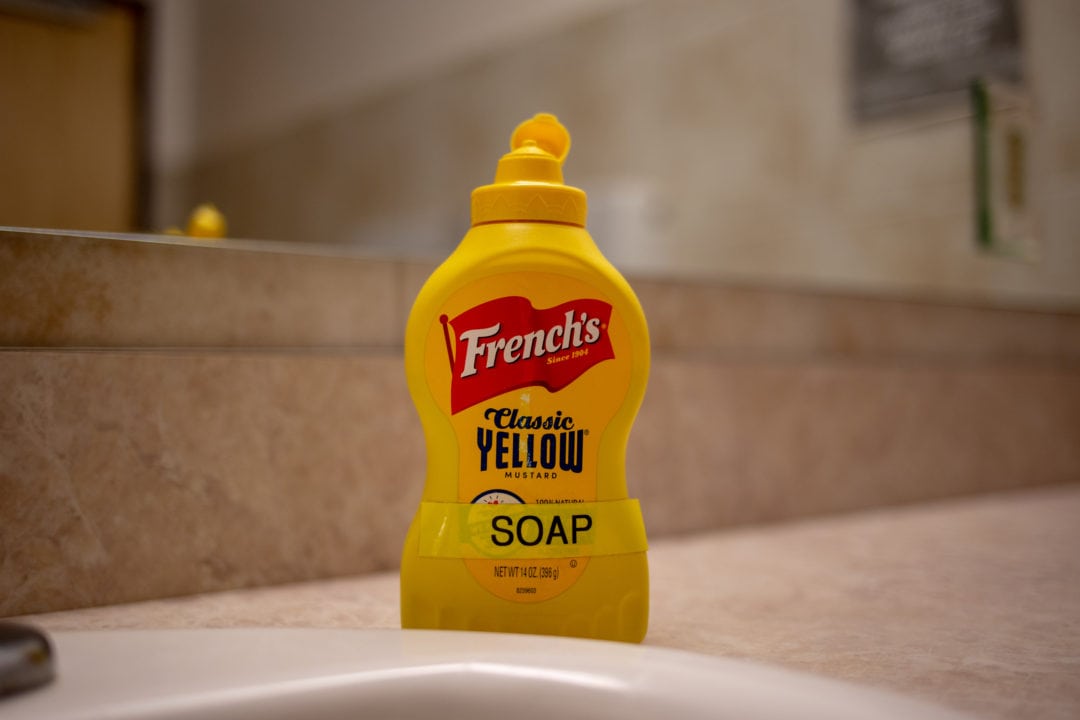
Levenson does admit that it’s getting harder to find mustards that the museum doesn’t already have in its collection, and they’ve already collected all of the so-called “holy grail” mustards. But after more than 30 years of collecting, Levenson still has a soft spot for that tiny jar of Dickinson’s. “It’s not the most valuable mustard we have,” Levenson says. “But it’s the most memorable.”
If you go
The National Mustard Museum & Gourmet Gift Shop is open from 10 a.m.- 5 p.m., seven days a week. The museum is closed only on New Years Day, Easter Sunday, Thanksgiving, and Christmas Day.
